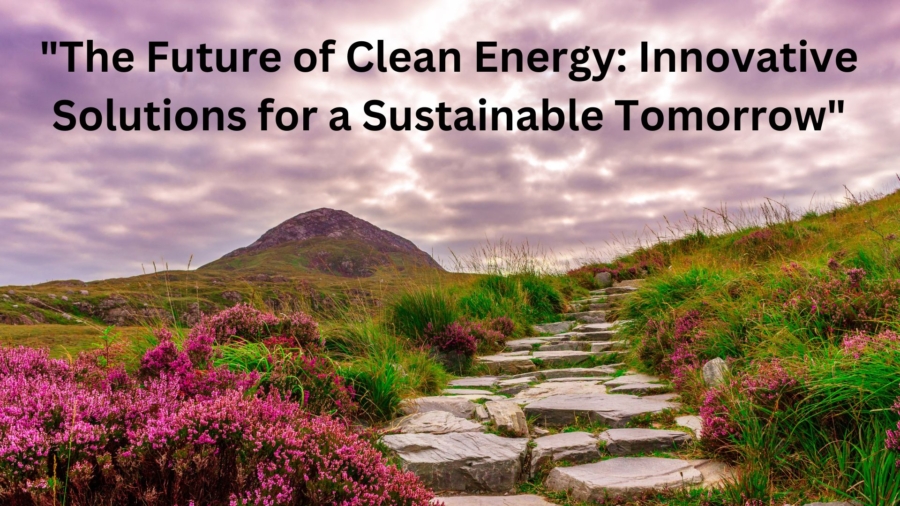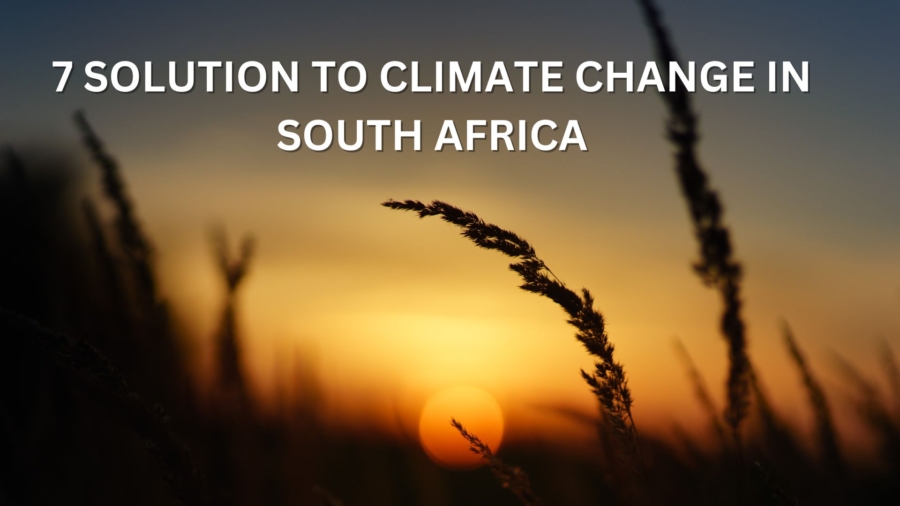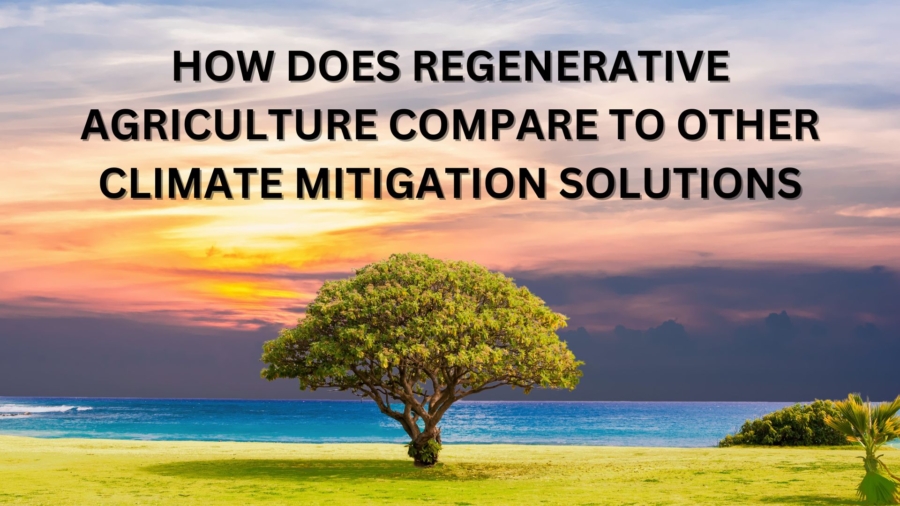Nature-Based Solutions (NbS) refer to actions that use natural processes and ecosystems to address environmental challenges and enhance human well-being. These solutions harness the power of nature to help mitigate or adapt to issues like climate change, biodiversity loss, and ecosystem degradation. NbS include practices such as restoring wetlands, planting forests, and preserving coastal habitats, which can serve as powerful tools for environmental restoration.
In today’s world, the urgency of addressing environmental crises like climate change, biodiversity loss, and ecosystem degradation has never been more critical. These challenges are not only threatening the planet’s health but also impacting communities and economies globally. The consequences of inaction could be devastating, making it imperative to explore and implement solutions that are both effective and sustainable.
Nature-Based Solutions present a promising path forward. By working with nature, rather than against it, NbS offer a sustainable and cost-effective approach to environmental restoration. They provide a way to rebuild ecosystems, enhance biodiversity, and improve resilience to climate impacts. This approach not only benefits the environment but also supports communities by providing ecosystem services such as clean water, air, and natural disaster protection.
What Are Nature-Based Solutions?
Nature-Based Solutions (NbS) are strategies that work with and enhance natural processes to address environmental challenges. Rather than relying on conventional engineering or technological interventions, NbS leverage the ability of ecosystems to provide solutions for issues like climate change, water management, and biodiversity loss. These solutions aim to restore, protect, or sustainably manage natural ecosystems, improving the health of the environment while benefiting human communities.
Some common examples of Nature-Based Solutions include:
- Reforestation: Planting trees in degraded areas to restore ecosystems, absorb carbon, and prevent soil erosion.
- Wetland Restoration: Rebuilding wetlands that act as natural filters, flood buffers, and habitats for wildlife.
- Sustainable Agriculture Practices: Implementing techniques that improve soil health, increase biodiversity, and reduce dependence on chemical fertilizers and pesticides.
- Coastal Protection through Mangroves: Restoring mangrove forests along coastlines to reduce the impacts of storm surges and rising sea levels while providing habitat for marine life.
Unlike traditional engineering solutions, which often rely on hard infrastructure (like dams, seawalls, or concrete barriers), Nature-Based Solutions utilize the natural environment to deliver benefits. For instance, instead of building a seawall to protect against coastal erosion, NbS might involve restoring coastal wetlands or mangroves, which naturally provide the same protection while supporting biodiversity.
The benefits of Nature-Based Solutions are numerous:
- Sustainability: NbS work in harmony with nature and offer long-term solutions by enhancing ecosystem health. They are self-sustaining, reducing the need for continuous human intervention.
- Cost-Effectiveness: NbS are often more affordable compared to traditional engineering solutions, which can require expensive materials, ongoing maintenance, and energy consumption.
- Biodiversity: By restoring natural habitats, NbS enhance biodiversity, supporting the survival of species that rely on these ecosystems. They contribute to the resilience of ecosystems, helping them to recover from environmental shocks and adapt to future changes.
The Role of Nature-Based Solutions in Climate Change Mitigation and Adaptation
Nature-Based Solutions (NbS) play a crucial role in both mitigating the impacts of climate change and helping communities adapt to its effects. By working with nature, these solutions address the root causes of climate change and enhance resilience to its inevitable consequences.
Climate Change Mitigation through NbS
One of the primary ways NbS contribute to climate change mitigation is through carbon sequestration. Natural ecosystems, such as forests, soils, and wetlands, absorb and store carbon dioxide from the atmosphere, helping to offset emissions. Forests, for example, act as significant carbon sinks, storing carbon in trees, plants, and soil. Similarly, healthy soils and wetlands can capture carbon and prevent its release into the atmosphere. Reforestation and afforestation are key examples of NbS that not only restore ecosystems but also reduce the concentration of greenhouse gases in the air.
Other NbS, like improving agricultural practices (e.g., agroforestry, no-till farming), can increase soil carbon storage, further contributing to climate change mitigation. These practices help sequester carbon while improving soil health and food security.
Climate Change Adaptation through NbS
In addition to reducing greenhouse gas emissions, NbS also enhance climate resilience by providing essential services that help communities adapt to climate impacts. These solutions address specific climate risks, such as flooding, heatwaves, and droughts, by restoring or preserving natural ecosystems.
- Flood Protection: Wetlands, mangrove forests, and natural floodplains act as buffers, absorbing excess water during heavy rainfall or storm surges, reducing the risk of flooding and coastal erosion.
- Heat Regulation: Urban green spaces, such as parks and tree canopies, help mitigate the urban heat island effect by cooling down cities, improving air quality, and providing shade.
- Drought Management: Sustainable water management practices, such as restoring wetlands or improving soil health through agroecology, enhance the ability of ecosystems to store water, reducing the severity of droughts and increasing resilience to water scarcity.
Case Studies/Examples of Successful NbS in Mitigating Climate Impacts
- Mangrove Restoration in the Philippines: Mangrove forests along the coastlines of the Philippines have been restored to provide protection against storm surges, coastal erosion, and rising sea levels. These forests sequester large amounts of carbon and support local communities by improving fisheries and providing a habitat for wildlife. Following severe typhoons, the restoration of mangroves has demonstrated how NbS can reduce the impacts of climate-related disasters.
- Reforestation in China (The Green Wall Project): China’s massive reforestation initiative, known as the “Green Wall,” involves planting trees in the northern regions of the country to combat desertification, soil erosion, and the impacts of climate change. This project helps sequester carbon, restore biodiversity, and protect local communities from sandstorms and droughts.
- Wetland Restoration in the United Kingdom: In the UK, efforts to restore peat bogs and wetlands have proven successful in capturing carbon, improving water quality, and reducing flood risks. These restored wetlands act as carbon sinks while enhancing the resilience of local ecosystems and communities to extreme weather events.
Protecting Biodiversity through Nature-Based Solutions
Nature-Based Solutions (NbS) are deeply interconnected with biodiversity restoration. These solutions not only address environmental challenges like climate change but also play a crucial role in protecting and restoring the planet’s biodiversity. By preserving, enhancing, or restoring natural ecosystems, NbS help maintain the diversity of species, ecosystems, and genetic resources that sustain life on Earth.
The Link Between NbS and Biodiversity Restoration
NbS are fundamentally based on the principle that healthy ecosystems are vital for supporting biodiversity. When natural habitats are protected or restored, they provide the necessary conditions for a wide range of species to thrive. NbS help rebuild ecosystems that have been degraded by human activities, such as deforestation, pollution, or overexploitation, thereby fostering the recovery of lost or endangered species.
For example, when wetlands are restored, they become critical habitats for a variety of bird species, amphibians, and other wildlife. Similarly, protecting forests allows species that depend on them, such as endangered primates or forest-dwelling birds, to survive and reproduce. This dynamic relationship between NbS and biodiversity ensures that these solutions provide long-term ecological stability.
How NbS Help Protect Habitats and Wildlife
NbS help protect habitats by addressing the root causes of ecosystem degradation and restoring natural processes that are essential for sustaining life. By managing land and water resources in a way that is more aligned with ecological processes, NbS create healthier, more resilient ecosystems that can better support wildlife.
For instance:
- Reforestation and Forest Conservation: Planting trees and protecting existing forests restore habitats for a wide range of species, from small insects to large mammals. These forests also play a vital role in carbon sequestration and regulating the water cycle.
- Wetland Restoration: Wetlands are some of the most biodiverse ecosystems on the planet. Restoring wetlands can create new habitats for fish, birds, and insects, while also improving water quality and providing flood protection.
- Coastal Protection through Mangroves and Coral Reefs: Restoring mangrove forests and coral reefs not only protects coastlines from erosion but also provides habitats for marine species, including fish, crustaceans, and sea turtles.
Examples of NbS that Restore Ecosystems and Their Biodiversity
- Coral Reef Restoration: Coral reefs are among the most biodiverse ecosystems on the planet, supporting thousands of species. Coral reef restoration projects involve activities like transplanting coral, reducing pollution, and establishing marine protected areas to allow reefs to recover from the impacts of climate change, pollution, and overfishing. The successful restoration of coral reefs helps preserve marine biodiversity, improves fish populations, and supports coastal communities that rely on fishing and tourism.
- Forest Conservation and Reforestation in the Amazon: The Amazon rainforest, known as the “lungs of the Earth,” is home to an unparalleled diversity of plant and animal species. Large-scale reforestation and forest conservation efforts in the Amazon aim to halt deforestation, restore degraded lands, and protect wildlife habitats. These efforts help preserve the region’s biodiversity and provide critical ecosystem services such as climate regulation and water purification.
- Wetland Restoration in the Everglades, USA: The restoration of the Everglades, a unique wetland ecosystem in Florida, has been one of the largest ecological restoration projects in the world. By restoring the natural flow of water, removing invasive species, and replanting native vegetation, the project has helped revive habitats for a variety of species, including the endangered American crocodile and the West Indian manatee. These efforts contribute to both biodiversity restoration and flood protection.
- Mangrove Restoration in Indonesia: Indonesia has undertaken several large-scale mangrove restoration projects, which protect coastal communities from storm surges and rising sea levels while providing habitats for countless species of fish, birds, and invertebrates. These mangroves also sequester carbon, supporting global climate change mitigation efforts.
Economic and Social Benefits of Nature-Based Solutions
Nature-Based Solutions (NbS) not only offer environmental benefits but also provide significant economic and social advantages. By restoring and protecting ecosystems, these solutions contribute to job creation, enhance community resilience, improve livelihoods, and promote long-term economic growth. Here’s a closer look at the economic and social benefits of NbS.
Job Creation Through Green Projects
One of the most direct economic benefits of NbS is the creation of jobs through projects that restore and manage natural ecosystems. Green initiatives like reforestation, wetland restoration, and ecosystem rehabilitation often require labor for planting, monitoring, and maintaining restored areas. These jobs can range from manual labor (such as planting trees or clearing invasive species) to more skilled positions in environmental science, project management, and ecological monitoring.
For instance, reforestation projects not only provide employment for local communities in planting and maintaining forests but also foster the development of forestry-related industries, including timber, non-timber forest products, and eco-tourism. Similarly, ecosystem restoration projects can create jobs in areas like wetland conservation, coastal protection, and sustainable agriculture, providing income for communities while supporting the recovery of vital ecosystems.
Community Resilience and Well-Being
NbS contribute to community resilience by enhancing the ability of people to withstand and recover from environmental shocks, such as floods, droughts, or extreme weather events. Restoring natural buffers like wetlands, forests, and mangroves can protect communities from climate-related risks, ensuring their safety and reducing the financial burden of disaster recovery.
Beyond physical protection, NbS also contribute to improving livelihoods and health. For example, agroforestry (combining agriculture with tree planting) and sustainable agriculture practices provide farmers with diversified sources of income while reducing vulnerability to crop failures caused by extreme weather. In addition, the restoration of urban green spaces or forests offers mental health benefits by providing people with access to nature and recreational spaces. These areas can reduce stress, improve air quality, and encourage healthier lifestyles.
Enhancing Local Economies Through Sustainable Agriculture and Tourism
NbS support local economies in various ways, particularly through sustainable agriculture and tourism. By promoting sustainable agricultural practices—such as organic farming, agroecology, and permaculture—NbS enhance food security, reduce dependency on chemical inputs, and increase the profitability of farms by focusing on long-term sustainability.
In addition, NbS contribute to the growth of eco-tourism, which is becoming an increasingly important industry worldwide. The restoration of forests, wetlands, and coral reefs attracts tourists who are interested in nature-based experiences like wildlife watching, hiking, or diving. This type of tourism generates income for local communities, creates jobs in hospitality and guiding, and supports the conservation of the very ecosystems that draw visitors. For example, protected areas such as national parks or coastal reserves offer both ecological and economic value by attracting tourists while preserving biodiversity.
Challenges and Barriers to Implementing Nature-Based Solutions.
While Nature-Based Solutions (NbS) offer significant environmental, economic, and social benefits, their implementation faces several challenges. These barriers can hinder the widespread adoption of NbS, making it essential to address them in order to scale up their impact.
Challenges of Scaling NbS
- Funding: One of the main challenges to scaling NbS is securing adequate financial resources. Unlike traditional engineering solutions that often have clear, short-term returns, NbS typically require upfront investment and long-term maintenance. For example, reforestation and ecosystem restoration projects need substantial funding for planting, monitoring, and ensuring their sustainability. While NbS can offer cost-effective, long-term benefits, initial investments may deter governments or private investors who are focused on immediate returns.
- Political Will: Political support is crucial for the successful implementation of NbS, yet in many regions, there is insufficient political will to prioritize environmental restoration. Governments may be reluctant to allocate funds or pass legislation that supports NbS due to competing priorities or lack of awareness of the long-term benefits. Additionally, policies that encourage NbS are often fragmented or inconsistent across different sectors (such as agriculture, water management, and forestry), which can create obstacles to coordinated action.
- Technical Knowledge: Implementing NbS requires specialized technical knowledge and skills, particularly in areas like ecosystem restoration, environmental monitoring, and sustainable land management. In many parts of the world, there is a gap in local expertise and capacity to design and manage NbS projects effectively. This can lead to challenges in ensuring the success and longevity of NbS initiatives, particularly in regions with limited access to education or technical resources.
The Need for Effective Policy Frameworks and Community Involvement
For NbS to reach their full potential, it is essential to have effective policy frameworks that support their integration into national and local planning processes. These frameworks should outline clear guidelines for implementation, financing, monitoring, and evaluation. Governments must create policies that provide incentives for private and public investments in NbS, such as subsidies for sustainable agriculture or tax incentives for conservation efforts. Additionally, long-term policies should address issues like land tenure, which can complicate large-scale restoration projects.
Community involvement is equally important. Successful NbS often rely on local knowledge and engagement to ensure their relevance and sustainability. Communities that are directly affected by environmental changes should be actively involved in the design, implementation, and monitoring of NbS. This participatory approach ensures that NbS meet local needs, are culturally appropriate, and benefit from the traditional knowledge of local populations. Involving communities also fosters ownership and strengthens the resilience of the projects.
Integrating NbS with Other Climate Action Strategies
To maximize the effectiveness of Nature-Based Solutions, they must be integrated with other climate action strategies. NbS alone cannot solve all environmental challenges, especially those related to large-scale issues like carbon emissions, energy transition, or industrial pollution. To address the complexities of climate change, NbS should complement and reinforce traditional approaches, such as reducing fossil fuel dependence, adopting renewable energy technologies, and implementing energy efficiency measures.
For example, while NbS can sequester carbon and reduce the impacts of climate change, they need to be part of a broader strategy that includes reducing emissions through clean energy, sustainable transportation, and industry decarbonization. Integrating NbS with climate mitigation efforts can enhance the overall resilience of ecosystems and human communities while ensuring a comprehensive approach to tackling global climate challenges.
Future of Nature-Based Solutions
The future of Nature-Based Solutions (NbS) is promising, with increasing global interest and investment driving their adoption and development. As the urgency of addressing climate change and environmental degradation grows, NbS are expected to play an increasingly central role in achieving sustainability and resilience goals.
Growing Interest and Investment in NbS Globally
In recent years, there has been a significant surge in interest and investment in NbS worldwide. Governments, NGOs, and businesses are recognizing the value of natural ecosystems in combating climate change, restoring biodiversity, and protecting human livelihoods. International bodies like the United Nations and the World Bank have started to integrate NbS into global climate strategies, and many countries are adopting NbS in their national climate action plans.
Financial institutions and private sector investors are also increasingly funding NbS projects, driven by both environmental and economic incentives. For example, carbon markets are emerging where carbon credits from reforestation, wetland restoration, and other NbS projects can be traded, providing a financial incentive for ecosystem restoration. This growing investment, coupled with international frameworks such as the Paris Agreement, will help scale up NbS initiatives and foster innovation in the field.
Potential for Innovative Solutions in the Future
The future of NbS holds great potential for innovation. As technology advances, new tools and techniques will improve the effectiveness and scalability of NbS. For example:
- Remote sensing and artificial intelligence (AI) can enhance the monitoring of restored ecosystems, allowing for more precise tracking of biodiversity, carbon sequestration, and ecosystem health.
- Biotechnology could play a role in accelerating the restoration of degraded lands by using innovative methods such as plant-based technologies or microbial solutions to boost soil fertility and ecosystem recovery.
- Urban NbS, such as green roofs and vertical gardens, will become more common in cities as urbanization continues to rise. These innovative approaches will help address challenges such as heat islands, air pollution, and water management in rapidly growing urban areas.
These innovations will not only improve the effectiveness of NbS but also create new opportunities for research, technology, and job creation, making NbS even more integral to climate solutions in the future.
Scaling Up NbS Efforts: The Role of Governments, Businesses, and Individuals
Scaling up NbS efforts will require a collective commitment from governments, businesses, and individuals. Each stakeholder has a vital role to play in advancing NbS and ensuring they are effectively integrated into global sustainability efforts.
- Governments: Governments will need to provide strong leadership by implementing supportive policies and frameworks that incentivize NbS adoption. This includes establishing clear regulations, allocating funding for NbS projects, and integrating NbS into national climate action plans and development strategies. Governments should also work to create cross-sector collaboration, ensuring that NbS are coordinated with other climate and development initiatives.
- Businesses: The private sector has a crucial role in financing and implementing NbS. Companies can invest in ecosystem restoration as part of their corporate social responsibility or sustainability goals. Businesses in industries such as agriculture, forestry, and tourism can integrate NbS into their operations to reduce environmental impact and build more sustainable practices. Collaboration between businesses, governments, and NGOs can help create large-scale NbS projects that benefit both the environment and the economy.
- Individuals: While large-scale efforts are essential, individuals also play a key role in supporting NbS. People can participate in local reforestation efforts, reduce their carbon footprint, and advocate for policies that support NbS. Additionally, individuals can contribute to NbS through sustainable practices in their everyday lives, such as adopting sustainable agriculture techniques, reducing waste, or supporting businesses that prioritize environmental sustainability.
Conclusion
Nature-Based Solutions (NbS) represent a powerful and sustainable approach to restoring the planet, addressing urgent environmental challenges like climate change, biodiversity loss, and ecosystem degradation. By harnessing the power of natural ecosystems—such as forests, wetlands, and coastal habitats—NbS not only restore and protect biodiversity but also provide essential services that enhance human well-being, boost economies, and promote resilience in the face of environmental change.
As we look to the future, the growing interest and investment in NbS offer a promising path toward a more sustainable and resilient world. From innovative restoration techniques to scaling up efforts through collaboration across sectors, the potential for NbS to drive global change is immense. However, achieving this potential requires the collective action of governments, businesses, and individuals working together to overcome challenges and support NbS initiatives.
Now is the time to take action. Whether through supporting NbS projects in your local community, advocating for policies that prioritize nature-based solutions, or adopting sustainable practices in your daily life, each of us has a role to play in helping restore our planet. Let’s come together to champion NbS and contribute to the healing of our ecosystems for current and future generations.






